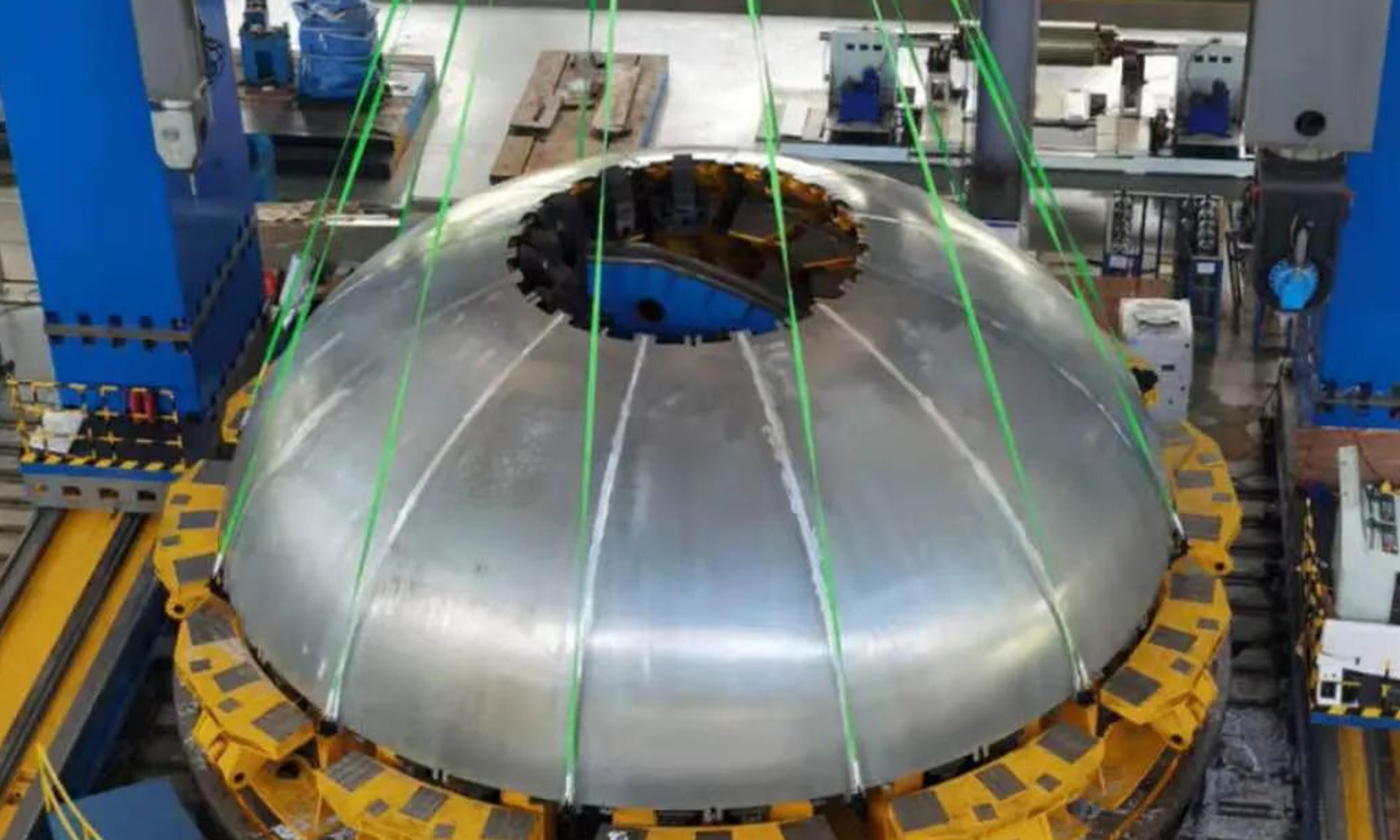China rolls out extra-large tank parts and liquid booster engine for new heavy-lift carrier rocket

China's first 9.5-meter-diameter rocket tank bottom is rolled out in Wuhan, Central China’s Hubei Province, by research teams from the China Aerospace Science and Technology Corporation (CASC). Photo: China Space News
Experts have hailed the development of China’s super-heavy-lift Long March-9 carrier rocket as a milestone, as the country’s first 9.5-meter-diameter rocket tank bottom and the liquid booster engine were rolled out in recent days.
The breakthrough was made in Wuhan, Central China’s Hubei Province, by research teams from the China Aerospace Science and Technology Corporation (CASC).
It has filled the gap in extra-large rocket tank products in the country’s aerospace industry, according to the China Space News on Wednesday, which is co-published by CASC and another industry giant China Academy of Space Technology.
The team specially designed a welding system that managed to combine extra-large petal parts into one, each with a diameter of 10 meters.
The petal parts, co-developed by state rocket manufacturer China Academy of Launch Vehicle Technology and the Central South University, are the world’s largest, with an increased strength by 10 percent and a millimeter-level form accuracy.
Last week, the booster for the second stage of China’s new heavy-lift carrier rocket – a 220-ton staged combustion hydrogen and oxygen rocket engine – was successfully rolled out, the China Space News reported.
The capability of the liquid booster engine has reached world-advanced level. It is expected to boost China’s future space missions and it’s also a significant indicator that China is becoming a strong space power.
The new engine’s performance and technical indicators have refreshed the record of China's hydrogen and oxygen rocket engines. Its development has supplemented to the liquid booster engine type spectrum and technology, and will lead the advancement in many other fields.
It only took four years to develop the engine from paper works to system functioning tests, during which the team achieved nine preliminary technological breakthroughs, while also realizing the digitalized development of the engine for the first time.
The launch vehicle may point to the Long March 9 carrier rocket, which will be used for future crewed lunar missions, deep space exploration and space infrastructure, Wang Ya’nan, editor-in-chief of Aerospace Knowledge magazine, told the Global Times on Wednesday..
Mou Yu, an official with the China Academy of Launch Vehicle Technology’s general designing department, said that to help build a future moon base, China is developing a 10-meter-diameter heavy-lift carrier rocket. Mou made the remarks at a session of the China Space Conference, which started on Saturday as part of the Space Day of China activities.

